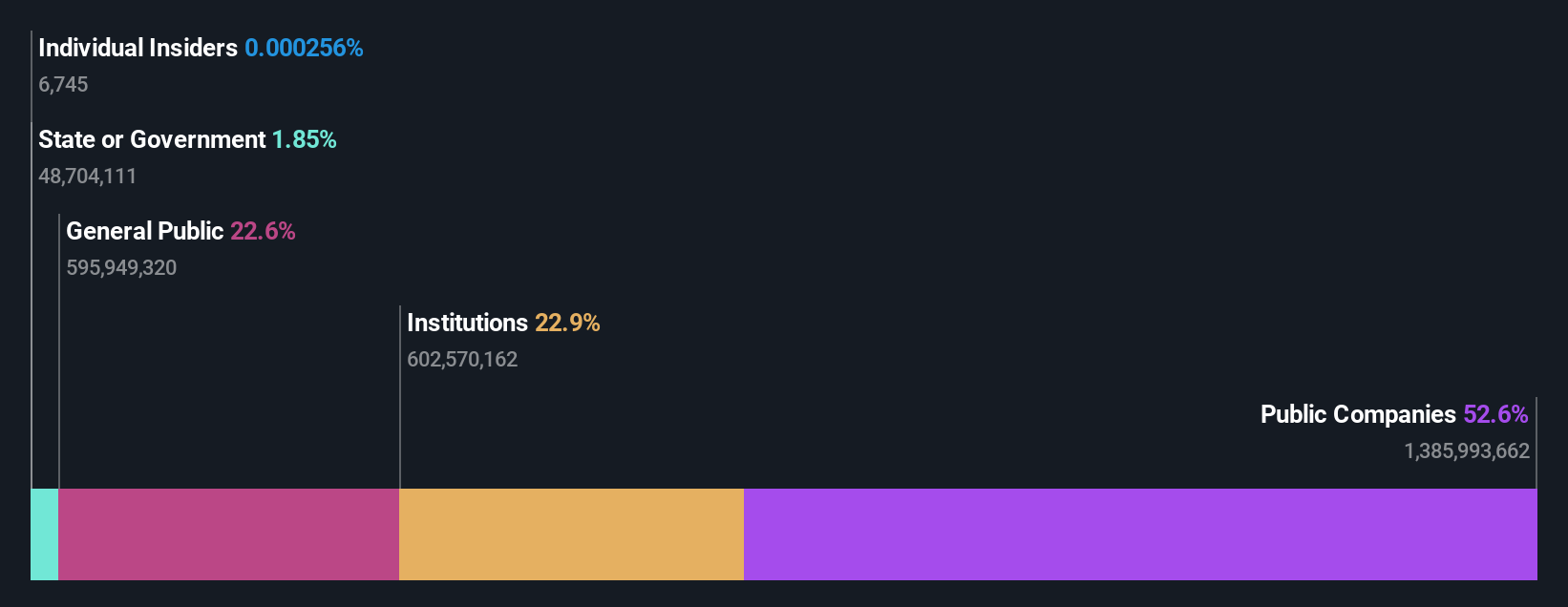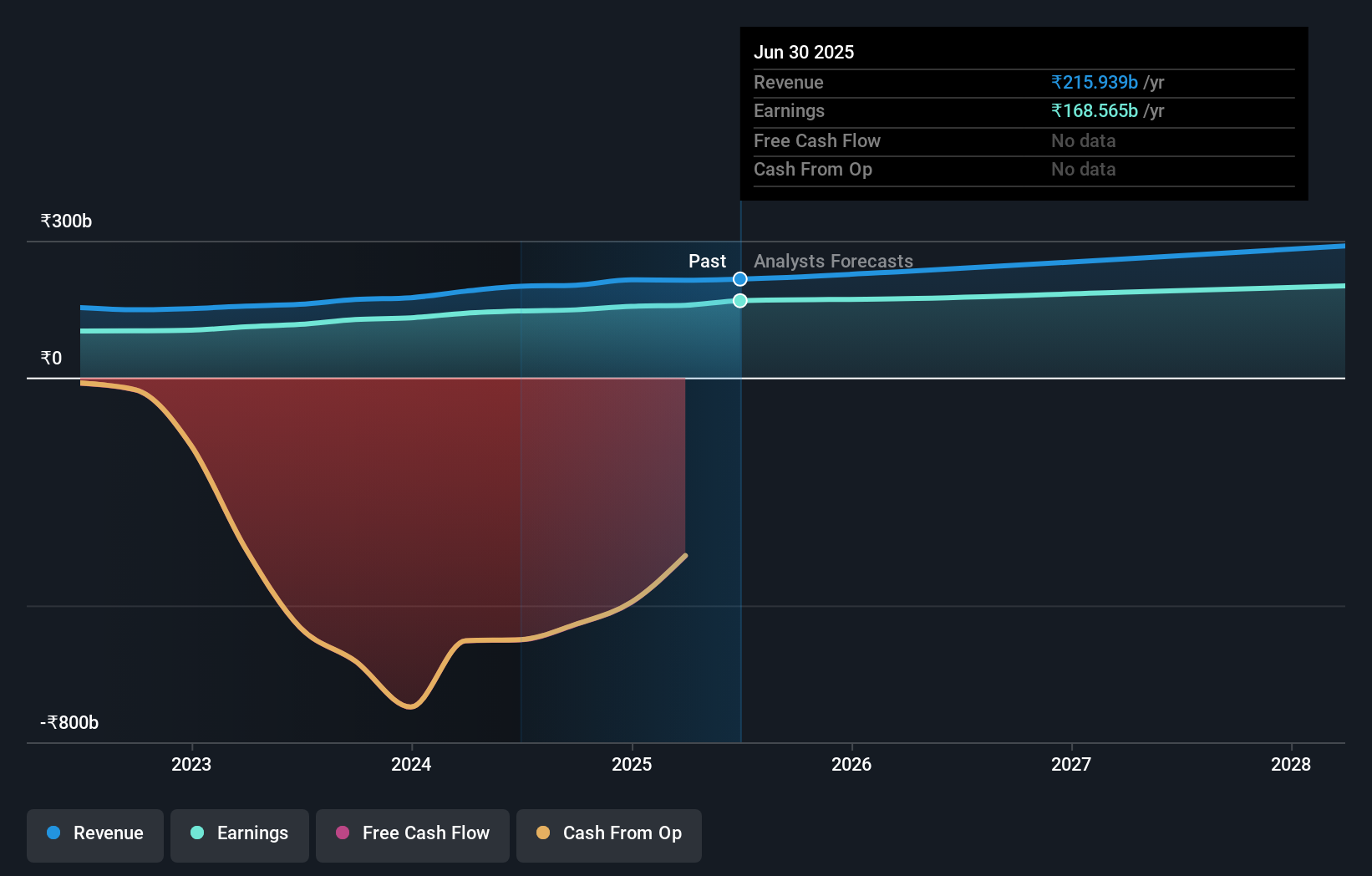- India
- /
- Diversified Financial
- /
- NSEI:RECLTD
REC Limited's (NSE:RECLTD) market cap touched ₹1.0t last week, benefiting both public companies who own 53% as well as institutions
Key Insights
- The considerable ownership by public companies in REC indicates that they collectively have a greater say in management and business strategy
- The largest shareholder of the company is Power Finance Corporation Limited with a 53% stake
- 23% of REC is held by Institutions
Every investor in REC Limited (NSE:RECLTD) should be aware of the most powerful shareholder groups. And the group that holds the biggest piece of the pie are public companies with 53% ownership. That is, the group stands to benefit the most if the stock rises (or lose the most if there is a downturn).
While public companies were the group that reaped the most benefits after last week’s 3.5% price gain, institutions also received a 23% cut.
Let's delve deeper into each type of owner of REC, beginning with the chart below.
View our latest analysis for REC

What Does The Institutional Ownership Tell Us About REC?
Many institutions measure their performance against an index that approximates the local market. So they usually pay more attention to companies that are included in major indices.
We can see that REC does have institutional investors; and they hold a good portion of the company's stock. This implies the analysts working for those institutions have looked at the stock and they like it. But just like anyone else, they could be wrong. When multiple institutions own a stock, there's always a risk that they are in a 'crowded trade'. When such a trade goes wrong, multiple parties may compete to sell stock fast. This risk is higher in a company without a history of growth. You can see REC's historic earnings and revenue below, but keep in mind there's always more to the story.

Hedge funds don't have many shares in REC. Our data shows that Power Finance Corporation Limited is the largest shareholder with 53% of shares outstanding. This implies that they have majority interest control of the future of the company. In comparison, the second and third largest shareholders hold about 2.2% and 1.8% of the stock.
While studying institutional ownership for a company can add value to your research, it is also a good practice to research analyst recommendations to get a deeper understand of a stock's expected performance. Quite a few analysts cover the stock, so you could look into forecast growth quite easily.
Insider Ownership Of REC
While the precise definition of an insider can be subjective, almost everyone considers board members to be insiders. Company management run the business, but the CEO will answer to the board, even if he or she is a member of it.
Insider ownership is positive when it signals leadership are thinking like the true owners of the company. However, high insider ownership can also give immense power to a small group within the company. This can be negative in some circumstances.
Our data suggests that insiders own under 1% of REC Limited in their own names. Being so large, we would not expect insiders to own a large proportion of the stock. Collectively, they own ₹2.6m of stock. It is good to see board members owning shares, but it might be worth checking if those insiders have been buying.
General Public Ownership
The general public, who are usually individual investors, hold a 23% stake in REC. While this group can't necessarily call the shots, it can certainly have a real influence on how the company is run.
Public Company Ownership
Public companies currently own 53% of REC stock. It's hard to say for sure but this suggests they have entwined business interests. This might be a strategic stake, so it's worth watching this space for changes in ownership.
Next Steps:
It's always worth thinking about the different groups who own shares in a company. But to understand REC better, we need to consider many other factors. To that end, you should learn about the 2 warning signs we've spotted with REC (including 1 which is concerning) .
If you are like me, you may want to think about whether this company will grow or shrink. Luckily, you can check this free report showing analyst forecasts for its future.
NB: Figures in this article are calculated using data from the last twelve months, which refer to the 12-month period ending on the last date of the month the financial statement is dated. This may not be consistent with full year annual report figures.
New: AI Stock Screener & Alerts
Our new AI Stock Screener scans the market every day to uncover opportunities.
• Dividend Powerhouses (3%+ Yield)
• Undervalued Small Caps with Insider Buying
• High growth Tech and AI Companies
Or build your own from over 50 metrics.
Have feedback on this article? Concerned about the content? Get in touch with us directly. Alternatively, email editorial-team (at) simplywallst.com.
This article by Simply Wall St is general in nature. We provide commentary based on historical data and analyst forecasts only using an unbiased methodology and our articles are not intended to be financial advice. It does not constitute a recommendation to buy or sell any stock, and does not take account of your objectives, or your financial situation. We aim to bring you long-term focused analysis driven by fundamental data. Note that our analysis may not factor in the latest price-sensitive company announcements or qualitative material. Simply Wall St has no position in any stocks mentioned.
About NSEI:RECLTD
REC
Engages in the provision of financing services for power generation, transmission, and distribution projects in India.
Very undervalued with proven track record and pays a dividend.
Market Insights
Community Narratives




